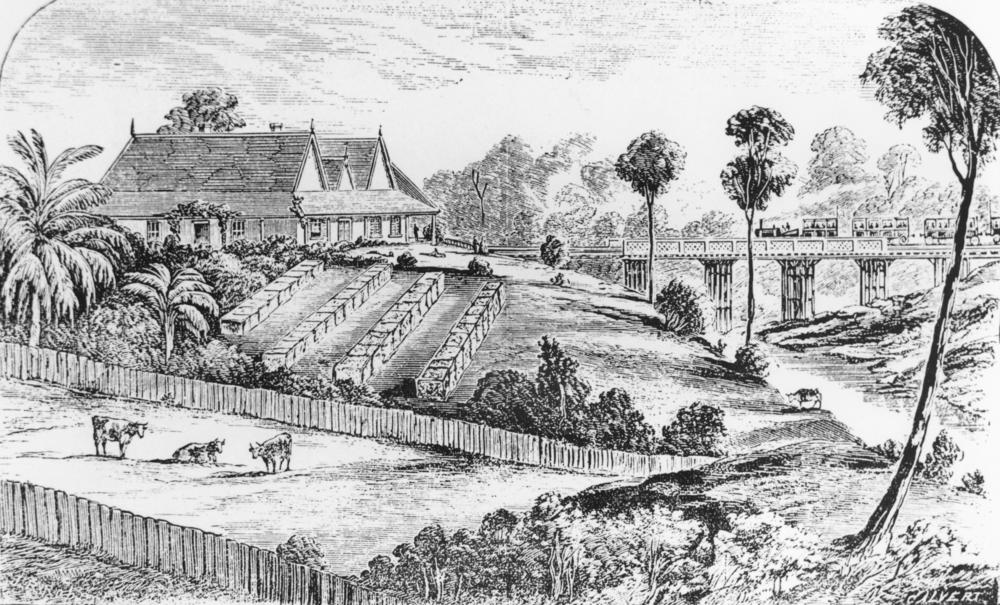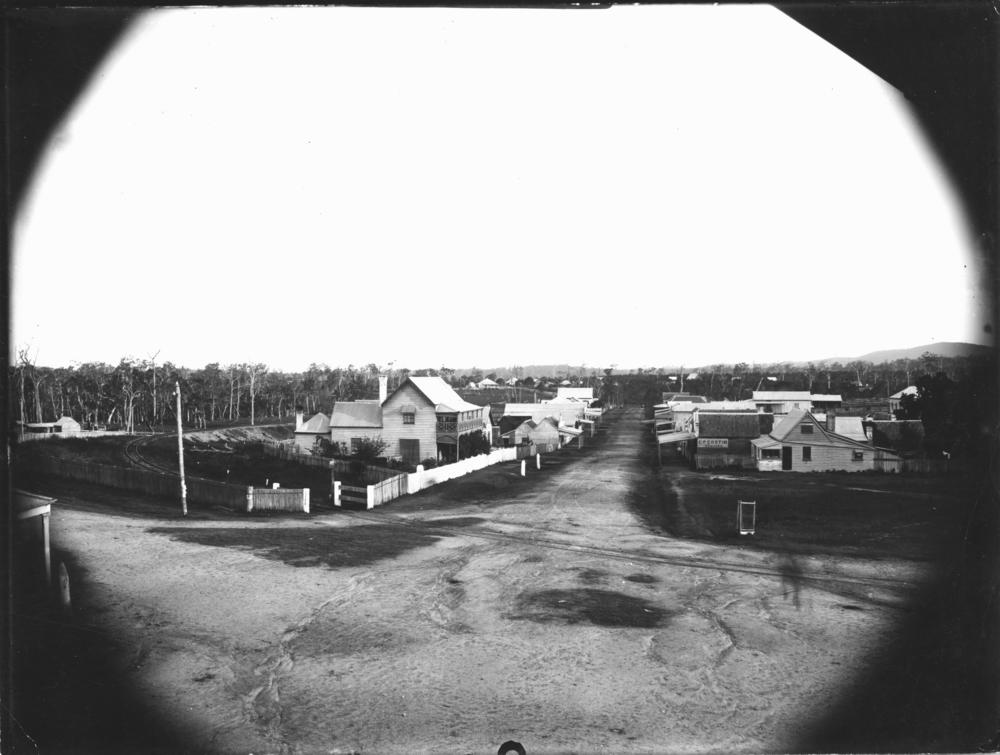|
List Of Divisional Boards In Queensland
This article provides a list of divisional boards in the Australian state of Queensland between 1879 and 1903. When Queensland separated from New South Wales as a colony in its own right in 1859, it inherited New South Wales's local government legislation, the ''Municipalities Act 1858'', which allowed the creation of a municipality with its own elected council to manage local affairs, upon the petition of householders in the area. However, by 1878 only eighteen towns had incorporated in this way. The Government of Queensland passed the ''Local Government Act 1878'', based on Victorian legislation enacted four years earlier, to allow more diverse forms of local government, but this quickly proved unsuitable to Queensland's requirements given its large, sparsely populated areas. Its response was to enact the ''Divisional Boards Act 1879'' (43 Vic No. 17), which established a new form of local government by dividing all unincorporated parts of Queensland into 74 divisions, and c ... [...More Info...] [...Related Items...] OR: [Wikipedia] [Google] [Baidu] |
Banana Division
#REDIRECT Shire of Banana The Shire of Banana is a local government area located in the Capricorn region of Queensland, Australia, inland from the regional city of Gladstone. The shire was named after the first township in the region (Banana), which in turn was named ... Banana Division ... [...More Info...] [...Related Items...] OR: [Wikipedia] [Google] [Baidu] |
South East Queensland
South East Queensland (SEQ) is a bio-geographical, metropolitan, political and administrative region of the state of Queensland in Australia, with a population of approximately 3.8 million people out of the state's population of 5.1 million. The area covered by South East Queensland varies, depending on the definition of the region, though it tends to include Queensland's three largest cities: the capital city Brisbane; the Gold Coast; and the Sunshine Coast. Its most common use is for political purposes, and covers and incorporates 11 local government areas, extending from Noosa in the north to the Gold Coast and New South Wales border in the south (some sources include Tweed Heads, New South Wales which is contiguous as an urban area with Brisbane/Gold Coast), and west to Toowoomba (which is simultaneously considered part of the Darling Downs region). South East Queensland was the first part of Queensland to be settled and explored by Europeans. Settlements initially aro ... [...More Info...] [...Related Items...] OR: [Wikipedia] [Google] [Baidu] |
Beenleigh, Queensland
Beenleigh is a town and suburb in the City of Logan, Queensland, Australia. In the , the suburb of Beenleigh had a population of 8,252 people. A government survey for the new town was conducted in 1866. The town is the terminus for the Beenleigh railway line, which first opened in 1885 and a stop on the South Coast railway line, which reached Southport in 1889. Beenleigh was the administrative centre of the former Shire of Albert. It is known for the heritage-listed tourist attraction called the Beenleigh Artisan Distillery. In recent years it has seen many high rise developments. Geography Beenleigh and adjoining suburbs are located near the confluence of the Logan and Albert Rivers. The urban centre lies southwest of the Pacific Motorway after it crosses the Logan River and is crossed by the Gold Coast railway line. Logan River Parklands contain a boat ramp, barbeques, and a picnic area. Whilst it was once a stand-alone town built on sugar and home to Australia's olde ... [...More Info...] [...Related Items...] OR: [Wikipedia] [Google] [Baidu] |
Beenleigh Division
#REDIRECT Shire of Beenleigh The Shire of Beenleigh is a former Local government in Australia, local government area in the south-east of Queensland, Australia, centred on the town of Beenleigh, Queensland, Beenleigh. It existed from 1879 to 1949. History On 11 November 18 ... Beenleigh Division ... [...More Info...] [...Related Items...] OR: [Wikipedia] [Google] [Baidu] |
Springsure, Queensland
Springsure is a town and a locality in the Central Highlands Region, Queensland, Australia. It is south of Emerald on the Gregory Highway. It is the southern terminus of the Gregory Highway and the northern terminus of the Dawson Highway. It is northwest of Brisbane. At the , Springsure had a population of 950 people. Geography Today, Springsure is a pastoral settlement serving cattle farms, and sunflower, sorghum, wheat and chickpea plantations. Springsure is the hub for several coal mines such as the Minerva Mine and the Rolleston Mine. Significant exploration is ongoing in the district. It is also a staging point for expeditions to Carnarvon National Park. History '' Gangalu (Gangulu, Kangulu, Kanolu, Kaangooloo, Khangulu)'' is an Australian Aboriginal language spoken on Gangula country. The Gangula language region includes the towns of Clermont and Springsure extending south towards the Dawson River. '' Wadja'' (also known as ''Wadjigu'', ''Wadya'', ''Wadjainngo'', '' ... [...More Info...] [...Related Items...] OR: [Wikipedia] [Google] [Baidu] |
Bauhinia Division ...
#REDIRECT Shire of Bauhinia Bauhinia Division #REDIRECT Shire of Bauhinia The Shire of Bauhinia was a local government area in Central Queensland, Queensland, Australia. The Shire, administered from the town of Springsure, covered an area of , and existed as a local government entity from 1 ... [...More Info...] [...Related Items...] OR: [Wikipedia] [Google] [Baidu] |
Bundaberg
Bundaberg is a city in the Bundaberg Region, Queensland, Australia, and is the tenth largest city in the state. Bundaberg's regional area has a population of 70,921, and is a major centre of the Wide Bay–Burnett geographical region. The Bundaberg central business district is situated along the southern bank of the Burnett River, about from its mouth at Burnett Heads, and flows into the Coral Sea. The city is sited on a rich coastal plain, supporting one of the nation's most productive agricultural regions. The area of Bundaberg is the home of the Taribelang-Bunda peoples. Popular nicknames for Bundaberg include "Bundy" and "Rum city". The demonym of Bundaberg is Bundabergian. The district surveyor, John Thompson Charlton designed the city layout in 1868, which planned for uniform square blocks with wide main streets, and named it ‘Bundaberg’. An early influence on the development of Bundaberg came with the 1868 Land Act, which was a famous Queensland via media, th ... [...More Info...] [...Related Items...] OR: [Wikipedia] [Google] [Baidu] |
Barolin Division
#REDIRECT Shire of Barolin The Shire of Barolin was a local government area located in the Wide Bay–Burnett region of Queensland, Australia. It was the area south of the Burnett River but excluding the urban area of Bundaberg which was initially in Bundaberg Division. ... Barolin Division ... [...More Info...] [...Related Items...] OR: [Wikipedia] [Google] [Baidu] |
Nanango Division
#REDIRECT Shire of Nanango The Shire of Nanango was a local government area located in the South Burnett region of Queensland, Australia, about northwest of the capital, Brisbane. The Shire covered an area of , and existed as a local government entity from 1879 until 200 ... Nanango Division ... [...More Info...] [...Related Items...] OR: [Wikipedia] [Google] [Baidu] |
Nanango, Queensland
Nanango is a rural town and locality in the South Burnett Region, Queensland, Australia. In the , the locality of Nanango had a population of 3,599 people. Geography Nanango is situated north-west of the state capital, Brisbane, at the junction of the D'Aguilar Highway with the Burnett Highway. Sandy Creek () meanders through the town. The locality is part of the Burnett River catchment. The productive lands of the catchment feature sedimentary floodplains. The rich fertile soils of the floodplains are the agricultural and resource backbone of the region. While there are benefits of the flooding there are also risks including the loss of vegetation in riparian zones, biosecurity issues and spread of weed species. History The original inhabitants of the area were the Aboriginal people belonging to the Wakka Wakka (or Waka Waka) people. The area was used as a gateway to the bunya nut festivals, where Aboriginal people would travel from as far away as the Clarence River i ... [...More Info...] [...Related Items...] OR: [Wikipedia] [Google] [Baidu] |




